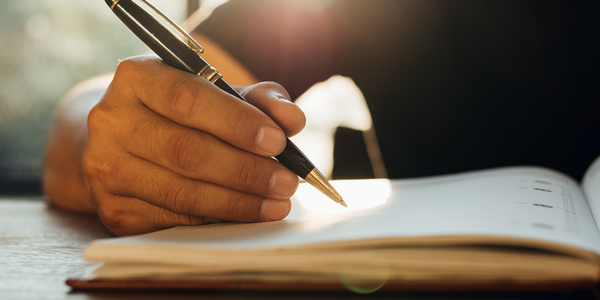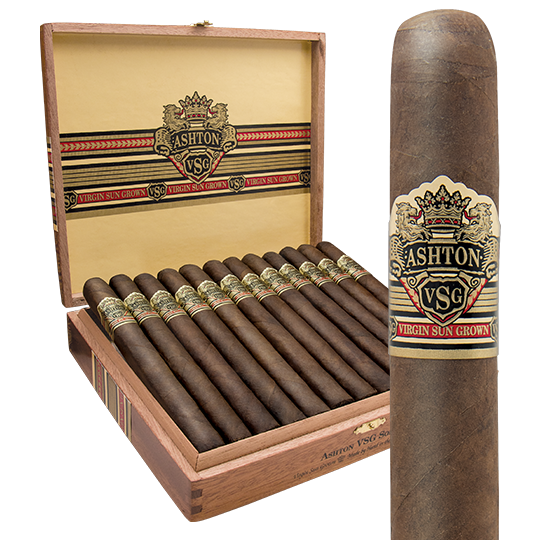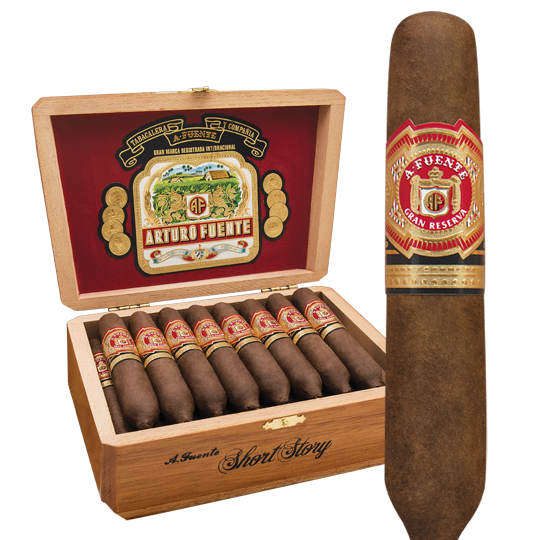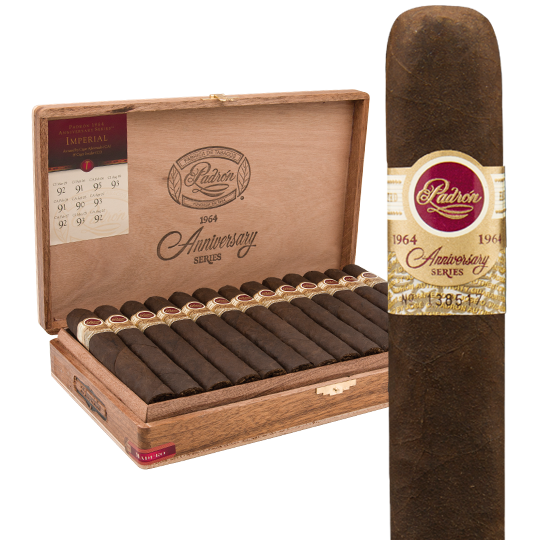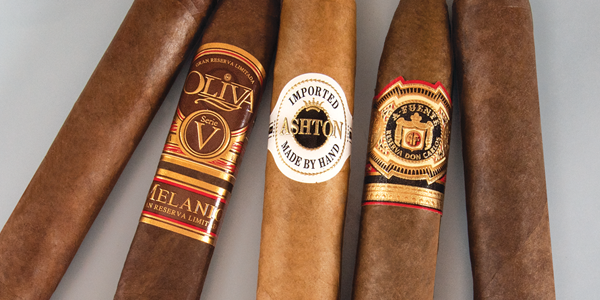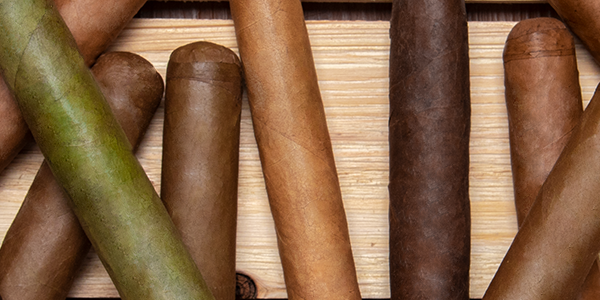How to Keep a Cigar Journal
When you’re getting into cigars, deciding what to smoke can be daunting. There are thousands of different cigar brands and blends to consider and each blend can be available in a dozen or more sizes. Starting a cigar journal is a great idea when you want to keep track of the cigars you’ve smoked – the ones you liked and those you didn’t.
To some, it may seem like a tedious exercise, but, in all honesty, a cigar journal is a resource you can review to trust your own palate versus taking the word of a critic or another cigar lover when you’re looking for new cigars. Your past cigars create a handy roadmap you can use to choose your next smoke. We’ve outlined all the critical information to consider noting in your cigar journal.
How to Start a Cigar Journal
Three things are required: a journal, a pen, and of course, cigars. For the journal, you can pick out a fancy leather-bound book with blank pages and populate them with the details of your choosing, or you can buy a cigar-specific journal which includes empty fields on each page where you can record precise stats for your cigars.
What to Record in a Cigar Journal
You can get into some pretty granular information with the right cigar journal. You can also catalog more general details if you prefer. We’ve broken down the essentials, followed by less-crucial but helpful points to note when you’re smoking a cigar.
The Important Stuff
Save the Cigar Band
This doesn’t require any writing. Most cigar journals include a space where you can stick the band after you remove it from your cigar. A cigar’s band is a critical piece of evidence. It identifies much of the information we discuss below. Knowing what a cigar’s band looks like is also the single easiest way to locate it again. It’s best to let the cigar warm up when you’re smoking it before you remove the band. Stick your cigar’s band in your journal with a piece of clear tape or a few drops of adhesive on the back. I always recommend snapping a picture of your cigar with the band on too.
Brand
On most cigar bands is the name of the brand (e.g., Arturo Fuente, Ashton, Montecristo, Padron, etc.). Because some brands produce a large portfolio of cigars, it’s helpful to write down the series, or the blend, you’re smoking (e.g., Ashton VSG, Arturo Fuente Hemingway, Padron 1964 Anniversary).
Country of Origin
Country of Origin simply refers to where a cigar is made (e.g. Dominican Republic, Nicaragua, Cuba, etc.). This is also usually referenced on a cigar’s band, but not always.
Wrapper
The wrapper is one of the most critical components of a cigar’s blend. The wrapper leaf can account for sixty to eighty percent of the flavor you perceive in a premium cigar. Common wrapper varietals include Connecticut Shade, Connecticut Broadleaf, Ecuador Sumatra, Ecuador Habano, Nicaraguan, and more. Cigar wrappers are also classified as Natural or Maduro.
Strength
Cigars are characterized as mild, medium, or strong. Record your own impressions in your cigar journal.
Shape
Cigars of the same blend but different shapes and sizes vary in intensity and the length of time it takes to smoke. Write down the shape you smoked (Robusto, Toro, Churchill, Corona, etc.) to determine which size is your favorite in a given blend.
Length & Ring Gauge
Cigar shapes are given distinct names, but often the exact dimensions of those shapes vary slightly from one brand to the next. Write down the dimensions of the cigar you’re smoking. For example, an Ashton Symmetry Robusto is 5 x 50, or 5 inches long with a 50 ring gauge.
Cigar-Maker / Blender
You may have to ask the sales person you bought the cigar from or perform a quick search online, but the blender is important. Carlito Fuente is one of the best-known cigar-makers in the world. He makes a number of brands, including Arturo Fuente, Fuente Fuente Opus X, Ashton, and more. When you like one brand from a particular cigar-maker, it’s worthwhile to explore the other blends he or she produces.
Price
Knowing how much you spent on a cigar is helpful when you want to find the best bargain or pick up a full box of something you really enjoy.
Box-Pressed or Round
The majority of premium handmade cigars are rolled in a round shape, but a number of prominent brands are box-pressed today, like Padron 1964 Anniversary. It’s not unusual to find examples of box-pressed and round formats in the same blend.
Binder & Filler Tobaccos
The interior tobaccos in a cigar are made of a binder (the leaves just below the wrapper) and a filler (the centermost leaves). These tobaccos contribute heavily to a cigar’s flavor profile. Often, the binder and filler tobaccos are derived from the country where the cigar is made, but not always.
Tasting Notes
Cigars possess a number of distinct tasting notes like cedar, leather, cocoa, cayenne, coffee, cashews, almonds, and hickory. Chronicle the tasting notes you get from a cigar in your journal.
Aroma
A cigar’s aroma can be silky and light or woody and dense. You may really enjoy the room note your cigar delivers, or you might take offense to it. A cigar’s aroma can agree with, or contrast, its taste.
Construction / Draw
A cigar can taste amazing but be poorly made and vice versa. Well-made cigars burn straight and even and they create a stable ash. Does air pass freely and evenly through your cigar when you puff on it?
Finish
The finish on a cigar is its crowning achievement. It’s the last impression you’re left with. Ideally, a cigar’s finish leaves you wanting more. If it’s bitter or too hot, perhaps you should have let it go out a little sooner. Write down your final thoughts.
Optional but Helpful Details
Date Purchased
Some aficionados meticulously catalog their purchase dates to age their cigars accordingly. For others, this is a bit over the top. But, you can age cigars like wine. If you plan to hang onto them for several months or years, it’s helpful to know when you bought them.
Name of Store
Logging the retailer where you bought a cigar is helpful when you want to buy it again.
Date Smoked
The date when you smoked a cigar is useful if you’re also writing down the purchase date – that way, you can track how long the cigar was aged after you bought it, and what it tasted like at that point.
Drink Pairings
Did you enjoy a vintage scotch or bourbon with your cigar? Or, do you wish you had? The perfect drink can enhance the taste of an already good cigar by leaps and bounds.
How Many Stars?
You don’t have to be a restaurant critic to rate your cigars with stars. Some journals come with them. It’s a key detail you can glance at when you’re trying to recall the most memorable cigars you’ve had.
Would You Buy It Again?
This simple question sums up a cigar with yes or no.
Where You Smoked It
The perfect circumstances significantly increase your enjoyment of a cigar. An easy place to light up with great cigar ventilation is always the best. Track your favorite cigar-friendly destinations.
Who You Were With
The company you keep can make or break a cigar too. Invite over pals who share your appreciation for cigars. Fire up and compare notes.

